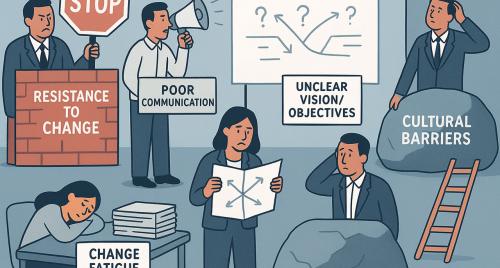
In a study of 7,500 full-time employees, it was found that
- 23% of employees reported feeling burned out at work very often or always
- 44% reported feeling burned out sometimes
- That means about two-thirds of full-time employees experience burnout
(Gallup, 2018)
Employee burnout, now a diagnosable condition, is the emotional and physical exhaustion due to chronic workplace stress, resulting in a lack of motivation and a reduced sense of accomplishment. Read this guide to learn the common causes of employee burnout, how to identify burnout in yourself and others, and ways you can begin to counteract the effects of burnout.
Common causes of employee burnout
- Stress and worry
- Loss of control
- Lack of communication
- Lack of psychological safety from managers
- Unreasonable time pressures
- Unclear job expectations
- Isolation and remote working
- Insufficient social support
Identifying burnout in yourself and others
It is important to acknowledge that each case of burnout is unique, with employees experiencing varied symptoms and behaviour changes. Some of the indicators of burnout in yourself and others include;
- Negative outlook - cynicism, irritability or pessimism
- Physical and mental exhaustion
- Absenteeism
- Reduced job performance
- Preoccupation with work
- Inability to make simple decisions
- Surge in preventable errors
- Shift from being proactive to reactive
- Becoming fixated with small problems
- Lack of team participation
- Withdrawal
- Decreased self-confidence
- Declining health and wellbeing
Strategies to counteract burnout
- Establish clear boundaries
- Review your current boundaries for work and personal time - think about how you switch into ‘work mode’ and how you demonstrate this to family or household members.
- Review and reset your daily/weekly routine.
- Reset your expectations
- Reassess existing deadlines to determine what responsibilities that may seem urgent mentally can be deprioritised in reality.
- Talk to your manager about your workload and expectations.
- Rest, recharge and manage your energy
- Ensure you take regular breaks throughout the day.
- Prioritise sleep and wellbeing.
- Continue to prioritise self-care. Check out these self-care activity ideas.
- Remember, burnout is a condition that requires physical healing.
- Lean on your support network
- Make an appointment to see your doctor or healthcare practitioner to discuss your wellbeing.
- Talk to colleagues, friends, and family. It is important to maintain social connections, especially while some people continue to work remotely and may be isolated from family and friends due to the pandemic.
Burnout is a serious condition that needs to be addressed. If you suspect yourself or someone you know is suffering from occupational related burnout it is important to seek help and guidance.







